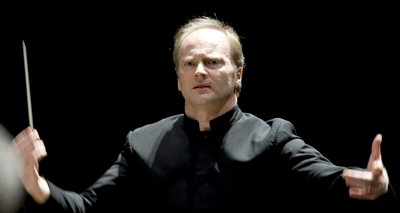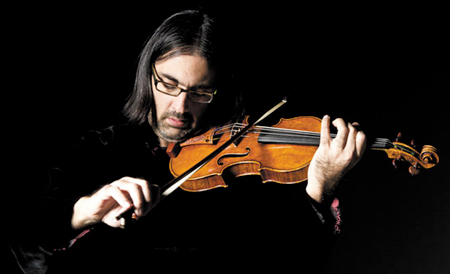by Daniel Hathaway

The Shostakovich concerto, premiered in 1955 some ten years after the composer began writing the work, begins with a lengthy Nocturne of almost unbearable sadness. A wild Scherzo breaks the mood, followed by an expressive Passacaglia. An audacious Burlesca that morphs into Klezmer music brings one of Shostakovich’s most riveting works to a conclusion.
Kavakos created distinct tone colors in each of the movements, spinning out the deep melancholia of the Nocturne and maintaining a steely calm through the Scherzo. He held firm against the seductive pomp of the orchestra in the Passacaglia and made plangent movements out of the silences in the cadenza that connect it to the final movement. The Burlesca was both perfectly controlled and splendidly uninhibited.
Noseda was an attentive collaborator, and the Orchestra played splendidly off Kavakos’s cues. Notable soloists included Mary Kay Fink (piccolo), Amitai Vardi (bass clarinet), Daniel McKelway (clarinet — in a remarkable conversation with the solo violin in the Scherzo), and Robert Walters (English horn.)
There was no question about how Kavakos’s performance moved the crowd. The audience was on its feet in an instant. After several callbacks, the violinist left them with a special gift: the slow movement from J.S. Bach’s second solo violin sonata, played without vibrato but with plenty of heartfelt expression.
Noseda began the evening with Goffredo Petrassi’s Partita for Orchestra, a Hindemith-infused work from 1932 with neo-Baroque movement titles (Gagliarda, Ciaccona, Gigue) that quickly won its young Italian composer two prizes.
The Partita’s orchestral unisons and quartal harmonies may be cribbed from his German contemporary, but its braying brasses, razzing flutes, rude soprano sax riffs, and wild piano hemiolas (not to mention its over-the-top, full-keyboard glissandos) seem to be Petrassi’s own inventions. The Cleveland Orchestra played it with more conviction than it probably deserves.
Saxophone also figured prominently — but more elegantly — at the end of the evening, in Sergei Rachmaninoff’s Symphonic Dances, interrupting the catchy rhythmic motif that opens and permeates the “Non Allegro” with a delicious melody. The Orchestra, who had been dishing up such symphonic extravaganzas as Strauss’s Alpine Symphony, Mahler’s Third Symphony, and Messiaen’s Chronochromie all over Europe and on very little sleep, still had plenty of energy and stamina to send Saturday’s audience away transported both by the sonic magnificence and clarity of its playing of Rachmaninoff’s final gift to the musical world. How do they do that?
Published on ClevelandClassical.com November 17, 2015.
Click here for a printable copy of this article




